How long would Russia be foolish to lose its planes?
This article will focus on another area in which our country would not hurt to catch up with the pace of growth. Since the backlog is associated not only with the loss of aviation efficiency, but also with non-combat losses of expensive equipment, as well as with the death of pilots.
Relevance of the problem
As usual, before starting to discuss the main topic, a little “checkmate. parts ".
So let's imagine the situation. The airplane makes a regular landing. At the moment the rear struts touch the strip, it has kinetic energy equal to the product of mass by the square of the speed, divided in half. And in order to stop, he has a limited distance - the length of the runway. In what ways can you do this at all?
Classically, there are three of them: aerodynamic, reverse thrust, wheel braking.
In the case of combat aircraft, thrust reverse is not applied. There are two left.
Aerodynamic - brake parachute, brake flaps and wing mechanization. In this case, kinetic energy is spent to overcome the air resistance force.
Wheel braking - the familiar scheme, when kinetic energy is converted into heat in friction pairs (disc / pad, runway / tire surface).
The first thing a pilot does to brake is to use a braking parachute. At the very beginning of braking, the parachute is much more efficient and safer than the wheels. Why it happens?
First, the braking force of the parachute system depends on the speed of movement, and at the beginning of the strip it is maximum.
Secondly, the parachute braking force does not depend on the coefficient of friction between the wheel and the surface. The coefficient may vary depending on the quality of the strip or the presence of precipitation.
Thirdly, the parachute provides maximum stability at high speeds, since the vector of the braking force is directed along the axis of the aircraft movement. This means that when braking in this way, skidding or skidding is impossible. What makes parachute systems indispensable on ice airfields and / or poorly covered areas.
Thus, at the outset, the pilot can rely mainly on the braking parachute.
Can the brakes be used at the start?
It is extremely undesirable to do this, and for the following reasons:
1) Brakes at the initial stage are ineffective, since the friction force of the wheels on the coating is equal to the product of the friction coefficient and the reaction force of the support. At the beginning of the runway, the aircraft's speed is maximum, and the lift continues to act on the wing. This means that the force with which the plane acts on the coating increases gradually as the speed decreases. Thus, in the initial phase it is very easy to lock the wheels and lose the ability to fly the aircraft at high speed.
2) Ahead of us is a stage when the parachute will become ineffective and we will have to rely only on wheel braking. It will be bad if the brakes are already overheated by this point. Overuse of the brakes in this way can lead to brake failure.
Why can't wheel braking be effective?
Let's look at the physics of the process and understand what can become the limiting link. Let's analyze the wheel-surface friction pair. It all depends on the coefficient of friction, that is, on the condition of the coating surface. If there is water or dust on it, no matter how powerful the brakes themselves, the "bottleneck" of the brake system, which determines its overall efficiency, will be the coefficient of friction. And if it is low, then the wheels will simply slide over the surface.
The second limitation is the brakes themselves.
And there is a nuance here. When braking occurs, the inertial force pulls the aircraft's mass forward. And the load is shifted from the rear axles to the front. It would seem that this is a plus, since the force of wheel pressure on the surface increases, which means that grip improves. And we can slow down more effectively. Moreover, the effect is the greater, the higher the center of gravity, and the airplane has a high one.
But another problem arises here. The fact is that in this case the load on the braking system of the front landing gear increases.
For the same reason, cars are equipped with more powerful brakes in the front than in the rear. But unlike a car, an airplane has 1 rack in front, not 2, and the dimensions of the wheels themselves do not allow increasing the size of the brakes.
Another factor limiting the braking force is the increased tendency of the aircraft to skid, skid and overturn. This is due to the multiplying effect of the combination of a high center of mass, its distribution and geometry (only 1 wheel in front). As a result, if you slow down too actively, the plane can be trivially either sideways from the runway and turn around.
A partial solution to this problem is the installation of systems like civilian versions of ABS and ESP. The electronics receive data on the speed of rotation of the wheels when the landing gear is compressed and adjusts the braking forces in such a way as to try to keep the plane on a straight line. However, the presence of this system does not guarantee a successful outcome, but only reduces the likelihood of skidding.
In addition, the presence of this effect completely deprives the idea of increasing braking performance by placing larger wheels with massive brakes in front.
Intermediate conclusions
Initially, it might have seemed to the layman that the issue of braking on the lane for aviation had long been resolved. And that the system has a large margin of safety due to the fact that one type of braking duplicates another.
But this is far from the case. In reality, parachute and wheel braking systems do not duplicate each other at all, but rather complement each other. Thus, the risks are potentially cumulative rather than subtracted. In view of the fact that for a dangerous situation to arise, it is enough that only one of the two systems fails. Moreover, the greatest danger is the failure of the parachute system.
Now let's look at situations in which something can go wrong.
1 script
Landing is performed normally after the completion of the flight mission. The struts touch the surface of the runway, the pilot activates the parachute, but a failure occurs. The aircraft continues to move along the strip without the ability to activate the parachute braking system. The further development of events depends on a number of factors, but in order not to unnecessarily complicate the article, we will consider the option to which the situation will be reduced in 9 cases out of 10: the pilot will try to brake with his wheels in the remaining section. Whether it is possible to stop or not depends on the length of a particular runway, as well as on the agility of the pilot, that is, how quickly he was able to navigate the situation. And on how well he went to the landing itself (withstood the glide path, speed).
Such a situation can end with a departure from the runway to the side or rolling out of the runway with various consequences (ranging from a relatively safe stop outside of it and ending with a coup, destruction of the aircraft and the death of the crew).
The video below captures the moment when the plane “loses” the braking parachute right in the air. Have to sit down without him.
2 script
More dramatic and dangerous. Engine failure occurs during the takeoff run. The pilot must immediately react and make a decision: to continue takeoff or to interrupt. The choice is complicated by the fact that every second the braking distance is reduced by 60-100 meters. It should be noted right away that if there was a guarantee that the plane could stop, the pilot would not have to make a choice. After all, there is only one rational decision - to interrupt takeoff. But it is the inability to stop within the remaining runway that may force the pilot to continue.
Alas, there is no way to protect against engine failures during takeoff. The most common cause is the ingress of foreign objects into the engine. For example, birds. It is also possible that debris may enter. Or a banal technical failure.
The problem of failures during takeoff is relevant for all types of aircraft. But the larger and heavier the plane, the higher the risks.
Now we have smoothly approached the main topic - modern technical solutions that exist in the world to minimize the risks of flight accidents and reduce the severity of their consequences.
Solution 1 - EMAS
The most obvious is end safety strips... Of course, they are provided for at our airfields, only they are not very effective in the form we have.
The solution to the problem was found long ago and was massively implemented back in the Formula 1 series races. We are talking about "security traps". In dangerous bends, an area filled with viscous material is located. A car that has lost control, flying off the track, gets stuck in such a surface and effectively dampens its speed.
The evolution of this idea comes down to the selection of materials with very specific properties. The safety end should be based on a level and safe area. The material itself is laid on top of this area in layers of different heights. When an aircraft hits it, the material should crumble or elastically deform. At the same time, at the design stage, all parameters must be calculated in such a way that braking is carried out efficiently, but at the same time safely.
The advantage is also that the rear landing gear is more massive, and braking due to material deformation is not associated with a change in the aircraft's center of gravity. Due to this, falling into such a trap, the rear pillars are involved in work an order of magnitude more efficiently than with standard braking, which (in addition to a significant increase in performance) completely eliminates skidding.
The benefits include the lack of system maintenance.
The photo below demonstrates what a modern Feng Shui safety strip should look like.
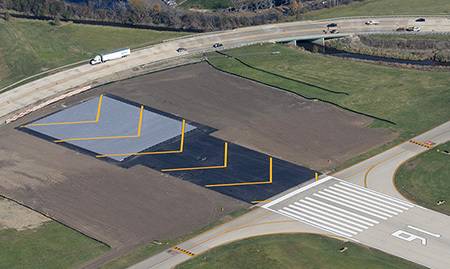
An example of the real work of such a system can be seen in the video:
And this is what the safety strip looks like here. And what does it lead to.
Parachute failure occurred during landing. The plane rolled off the runway. But as we can see, the end lane in the form in which it is, could not provide security. It was lucky that the crew survived.
Solution 2 - aerodrome braking systems
Another solution that developed in our country, but did not find widespread use, is braking the aircraft with a cable according to the principle of devices on an aircraft carrier. In Western terminology, this is called AS (Arresting System).
Maybe not everyone knows that many aircraft in NATO are equipped with a lightweight version of the brake hook - the Schaffer's hook.
So how did NATO come to the point of installing a hook on non-deck fighters for some reason?
Initially, a request from the US military departments was to create systems that would allow light aircraft to be based on pre-fabricated sites. Indeed, for takeoff on afterburner, aircraft are enough up to 500 meters (the MiG-29 can take off from 300), but for landing it is necessary already under 1000.
The task was set, and the industry presented several technical solutions that differ from each other in terms of size, weight, ease of installation and principles of energy absorption.
And everything that happened next can be described with the phrase: "The road will be mastered by the walker".
If you move slowly in one direction step by step, the results can be amazing.
At first glance, the decision to use a brake cable at a fixed airfield may seem overly complicated.
The first expected issue is service. The second is pilot training. But it turned out that both of these problems can be easily solved.
Solution to the first problem
Testing prototypes, the Americans were convinced that in the presence of a 500-meter runway, the overload during braking was 3 times less than on an aircraft carrier, where the plane had to stop at a section of 160 meters. This makes it possible to significantly reduce the loads both on the brake hook, which as a result received a simplified configuration, and on all ground-based nodes - they did not require such frequent replacement as on an aircraft carrier.
Solving the second problem
It turned out that the plane can grab the cable by driving over it with its wheels. This made the landing similar to the usual one with all the consequences - it made it possible to use it by ordinary pilots with a minimum extra. preparation.
This is how it looks in the end:
How is this fit different from the usual one? Practically nothing.
The fact is that the parachute system has one more nuance, which I did not mention. For a safe landing, a part of the runway is inevitably "eaten" for holding, lowering the front pillar, opening the container and opening the parachute system (2-3 seconds only for opening the parachutes). During this time, the plane manages to fly and travel a significant distance from 200 to 500 meters. In theory, you can sit down and "faster", but the safety of the operation is reduced and the complexity increases.
Note. At different times, various parachute braking systems were tested and applied: multi-dome and multi-part. In particular, there were variants of the so-called "approach" parachute. This is a parachute with a small area, which opened even before the strips touched the strip.
In the case of the braking system, everything is the same. After the plane has lowered the strut, the pilot only needs to check the fact of the hook - if it did not happen, activate the parachute.
So what does such a system give us as a result?
1) The most important thing that such a system gives is safety. One more method of braking is added, and one that alone will completely stop the plane without activating the brakes and parachute. Although it is not excluded and slight wheel braking in the process.
2) In addition, it also saves time on aircraft maintenance, reduces costs and increases the rate of combat missions.
Let us dwell on the second point in more detail.
The fact is that in the event of activation, the system does not activate either the parachute or the brakes in the chassis. This means that there is no need to pack and re-position the parachute. In the case of the Su-25, it is small. But for the Su-34, the procedure becomes much more labor-intensive. And this can become a problem for an operational airfield at moments of maximum intensity of sorties.
As far as the brakes are concerned, you might think this is a minor detail. However, we are talking about high-performance systems that cost a lot of money.
The aerodrome system for dissipating energy can use ordinary water as a working fluid. And its maintenance is much less laborious - the same Su-34 has six wheels, each of which has a complex braking system.
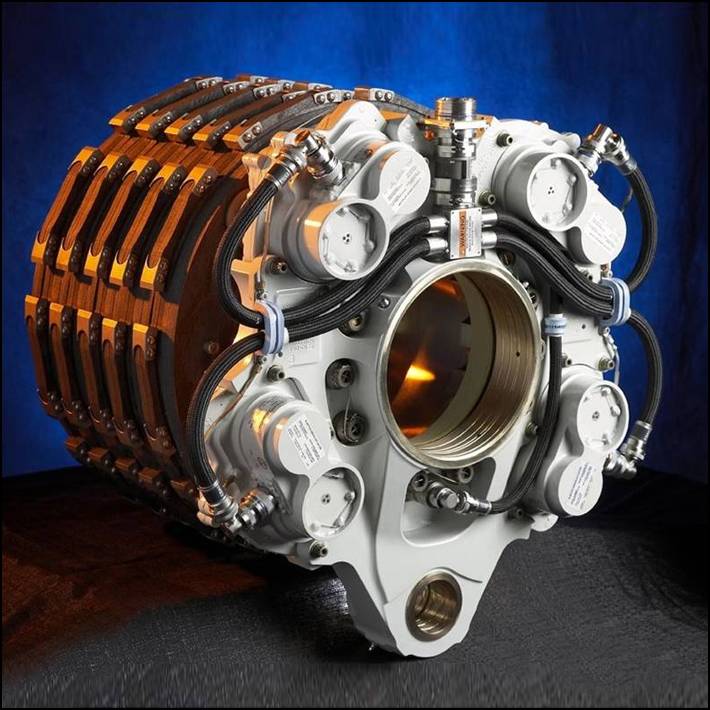
Modern aircraft braking system
These installations continue to be improved to this day. At the conceptual level, the idea of creating a computerized "smart" braking system is considered, which will be able to measure the speed of an aircraft and select the braking force required for the most efficient operation with this particular aircraft.
Separate nodes are also constantly being improved - for example, for co-based airfields, options are proposed when the cable can be "hidden" in a special technological furrow.
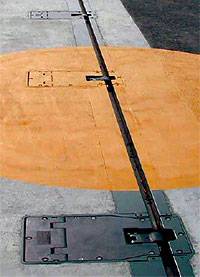
Source: aviapanorama.ru
Also, these machines can be installed not only as elements of the main braking method, but also as safety nets in front of the end safety strip, complementing it and making the whole system even safer.
The following shows how the stationary system is organized at the air base.
I would like to separately mention one of the concepts.
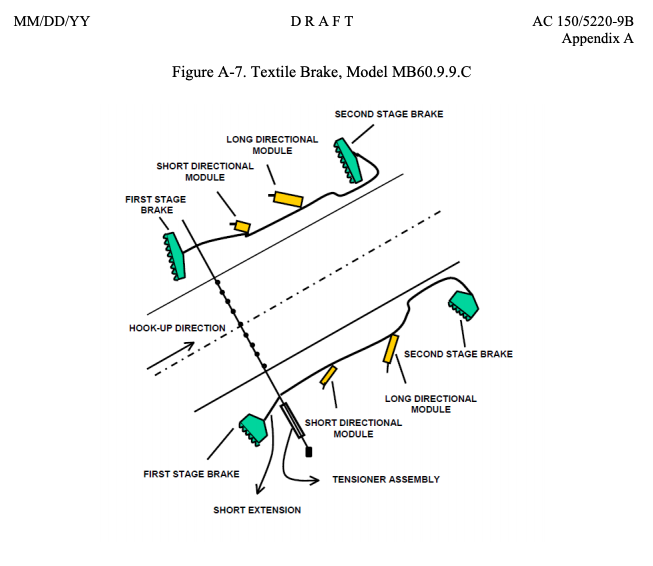
Here is a diagram of the connection of installations for braking heavier aircraft in two stages: first and second stage brake - 1 and 2 stages of braking mechanisms. First, the first brake system is activated, then the second is connected to it.
But all this is still only at the level of concepts.
Installation of installations
A small reference to the previous article regarding the technological and conceptual lag in aircraft maintenance.
Installation of braking systems involves the installation of special wedges in the ground, to which the installation itself is anchored. This stage in theory requires a lot of labor, but here is how this issue is solved in the case when sufficient attention is paid to the maintenance issue:
Accident
So, back to the incident, the result of which is captured on the cover of this article.
Here's how it went:
The cadet did not perform leveling and the landing speed at the end of the runway was significantly exceeded. The landing speed of the Su-27 is 240 km / h. Even if the similar figure for the Su-34 is slightly higher (in the region of 270 km / h), then in the video the speed at the end of the strip at some point was 360 km / h.
This alone was enough to make the decision to go around. Especially for the cadet - additional training, he is there for this.
However, the crew in this regard did nothing fundamentally new or outstanding. According to the international organization for the safety of air travel, 80% of incidents occurring during landing can be resolved by a timely go-around. That is, this "human error" is not an unforeseen factor, but rather a pattern due to the peculiarity of the functioning of our brain.
The first reason - a go-around is perceived as an admission of their weakness, inability to land the first time.
The second reason is that a person in a stressful situation desperately wants to resolve this situation, to stay on the ground. This leads to ignoring the real risks and landing "by all means".
There are other aspects that affect our psyche, but now not about that.
It is important that such situations cannot be "stupidly" attributed to individual people - they are systemic. And they will repeat themselves.
And the task of engineers is reduced to the development of technical means that will maximally insure the pilots from their own mistakes.
All the systems listed in the article could easily prevent this (and similar) incidents.
Conclusions
At a time when military parades and forums "Army" are held with pomp, to which guests from Turkey (aerobatic team "Turkish Stars") come with their mobile brake machines BAK-12 to ensure their safety in the conditions of demonstration performances, our pilots continue to die in combat conditions due to rolling out of the runway.
In the photo below, the planes of the Turkish "aerobatics" - clearly visible Schaeffer's hook on the belly.

Source: aerobaticteams.net
The incident with the death of Russian pilots in Syria was covered in the media as modestly as possible. No photo or video footage.
Dry statement of facts:
Again, such incidents have always happened and will always happen. The only question is what our country has "prepared for the war."
And just like in the last article, we are not talking about some "super-high-tech" technical solutions like satellite reconnaissance systems or sonar stations for submarines. By themselves, some decisions are very primitive.
Yes, and there is someone to "write off" - all the work has already been done overseas and have chosen the most rational solutions.
What is the problem is not clear.
In Russia, according to the above-described scenarios, airplanes regularly “fight”.
Thus, the prototype was destroyed. This led to the whole process stalled for a year. So also, due to their fault, the test pilot almost died.
New Su-34s with almost "full" service life have also fought several times.
His history Larger aircraft, Tu-22, also have rollouts.
June 16, 2016. Isle. Pskov region.
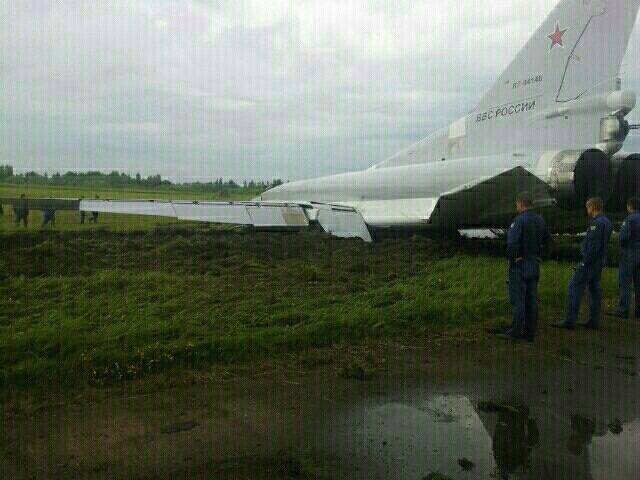
Source: (c) forums.airforce.ru
September 12, 2017. Tu-22M3 (tail number "20 red", registration number RF-94233). Shaikovka. Kaluga region.
However, there are even larger Tu-160 aircraft, military transport aircraft, tankers and AWACS in our VKS.
The question arises: "What has been done to prevent accidents, for example, with the Tu-160 at their main base?"
The total length of the strip of 3,5 km, together with 2 safety sections, is 3,65 km, that is, the section on each side has a length of fantastic 70 meters.
At the same time in the USA. Minot. North Dakota.
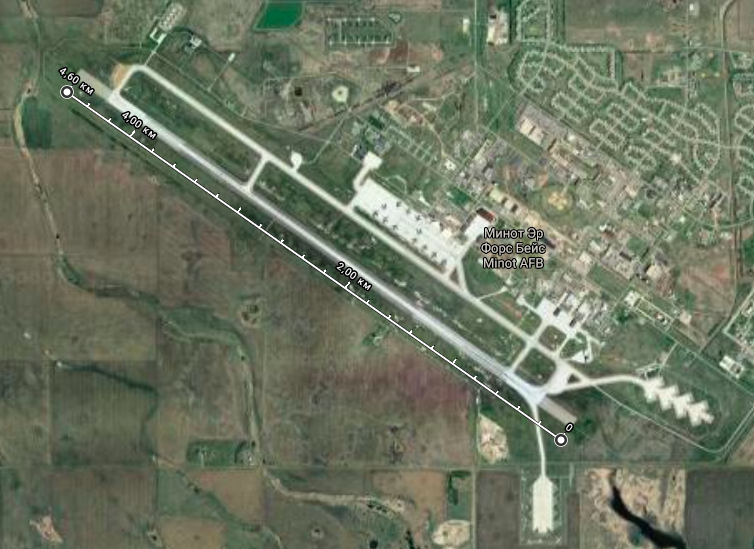
The scale of the safety strips relative to the "take-off" itself is striking - each 300 meters long.
And here I am interested in asking a question. In the comments to the previous topic, they mentioned the existence of formal rules in our aviation.
This length is 75 meters for an airplane 50 meters long ... Was it chosen for what reasons? Minimum compliance with the rules out of touch with reality?
Given that the total length of the strip in the United States is 4,6 km.
And this is what the modernized safety strip at Northolt (UK) looks like:
Although it is fair to say that these measures are not always enough. So, for example, in 2017, after being attacked by a suicide pigeon, the B-52 interrupted takeoff and rolled out of the runway. The crew was evacuated, but the firefighters were unable to approach fast enough and the plane burned down.
PS
Since the article deals with the Su-34 accident, I would like to discuss the points of view regarding the degree of guilt in the incident of all the defendants - the cadet, the instructor, the flight director.
As for me, the manager mistakenly did not give instructions to make another run.
The instructor, on the other hand, clearly irritated the cadet and, in fact, forced him to sit down with his comments. That is, the instructor gets two "failures" at once: for the lack of teamwork with the student and for the wrong decision ("low throttle" instead of "takeoff").
One of the advantages of a double cab (at least of those that have been announced) is the ability to feel the "shoulder" of a comrade, and not listen to "swearing".
In my opinion, the actions of this instructor are much more professional:
The cadet trusts him and has the opportunity to laugh at himself, and laughter is a very good way to relieve psychological stress in a stressful situation. The intonation and gestures are somewhat calming.
But maybe I'm wrong?
It is interesting to listen to those who flew.
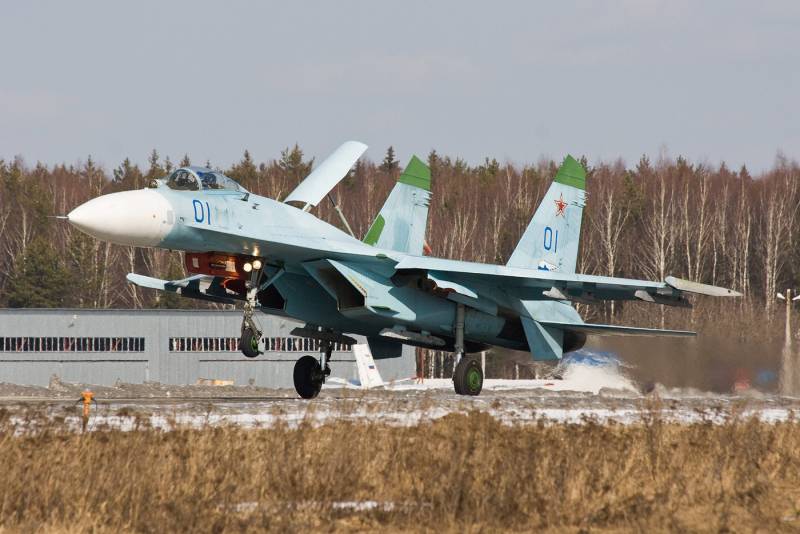
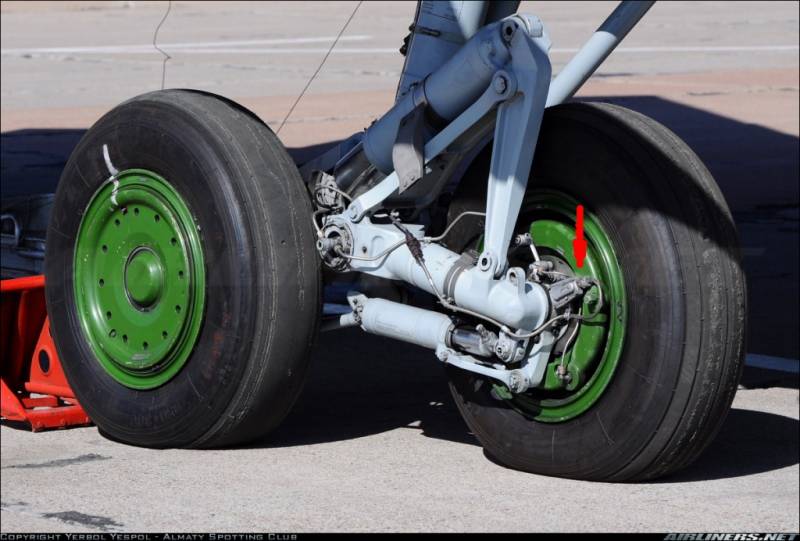
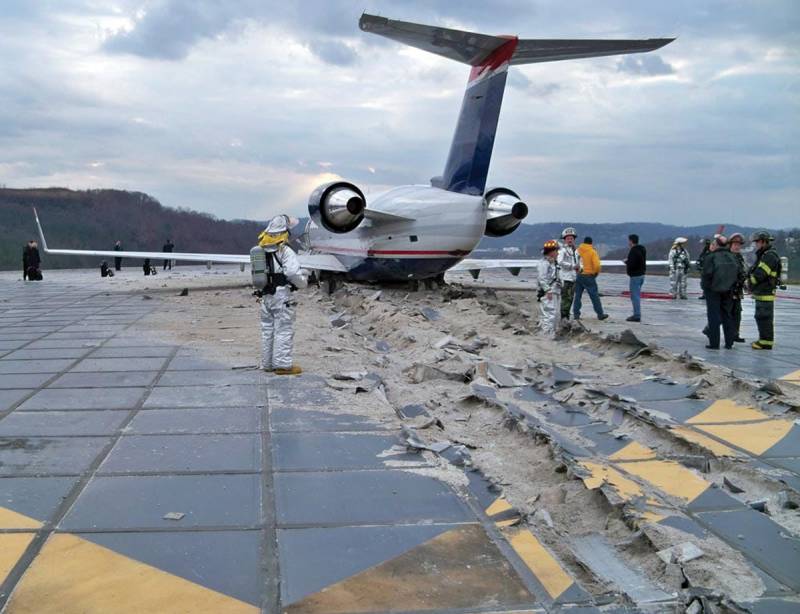
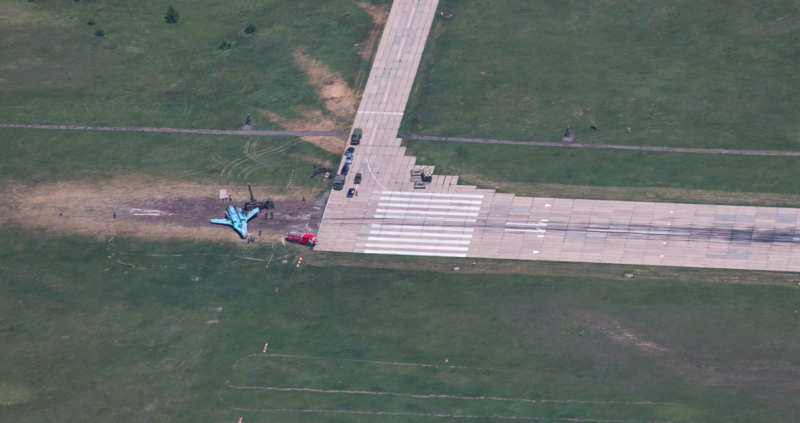
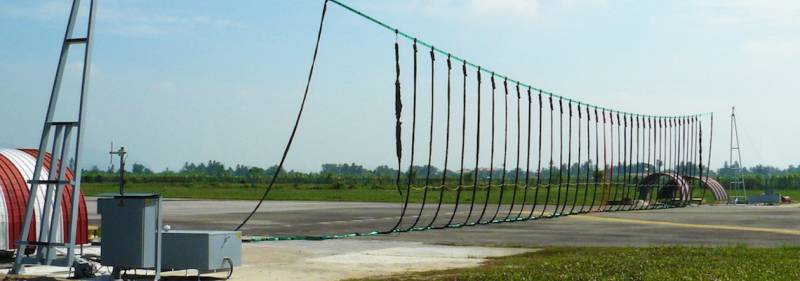
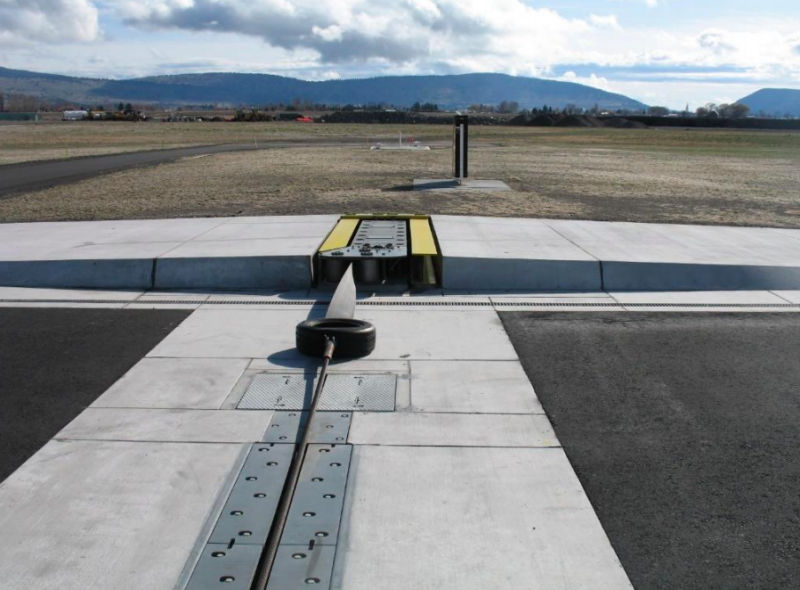
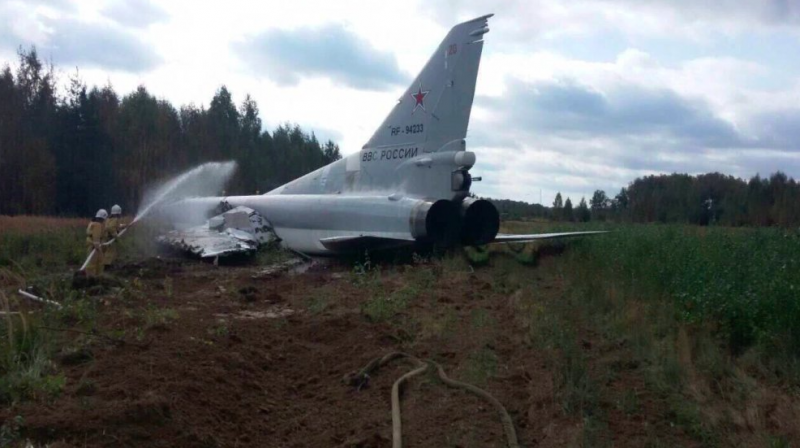
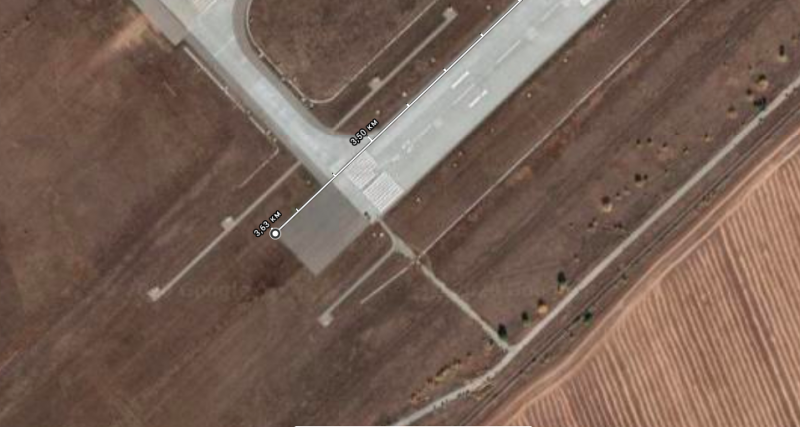
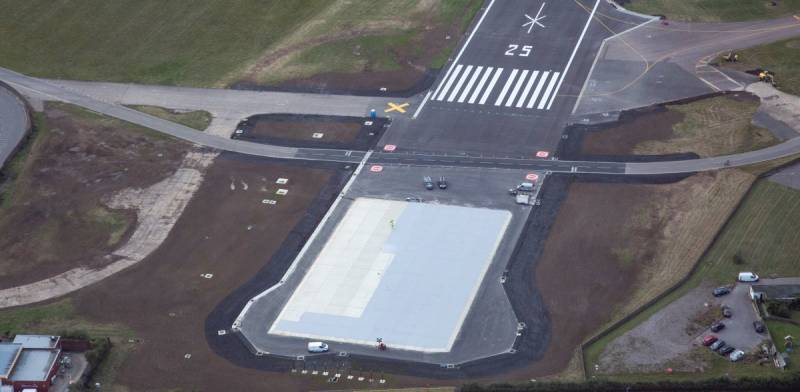
Information